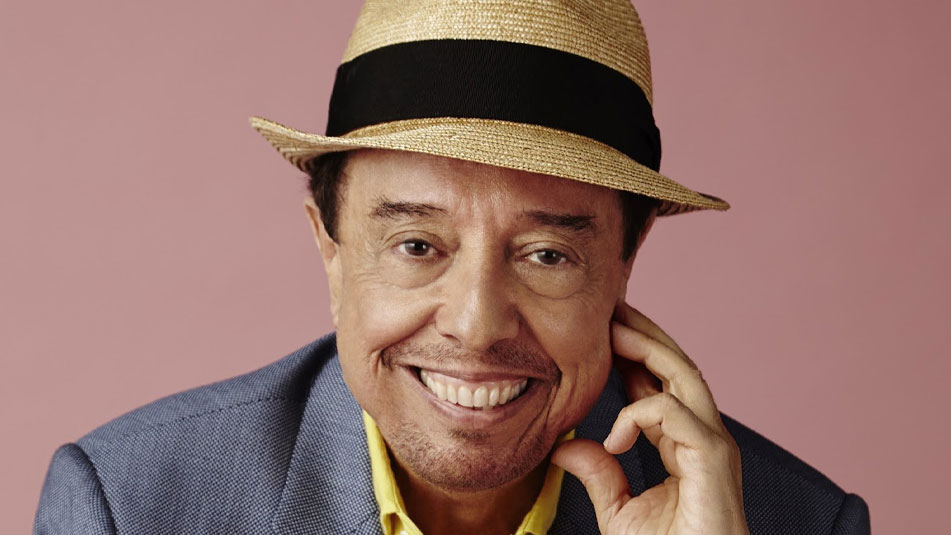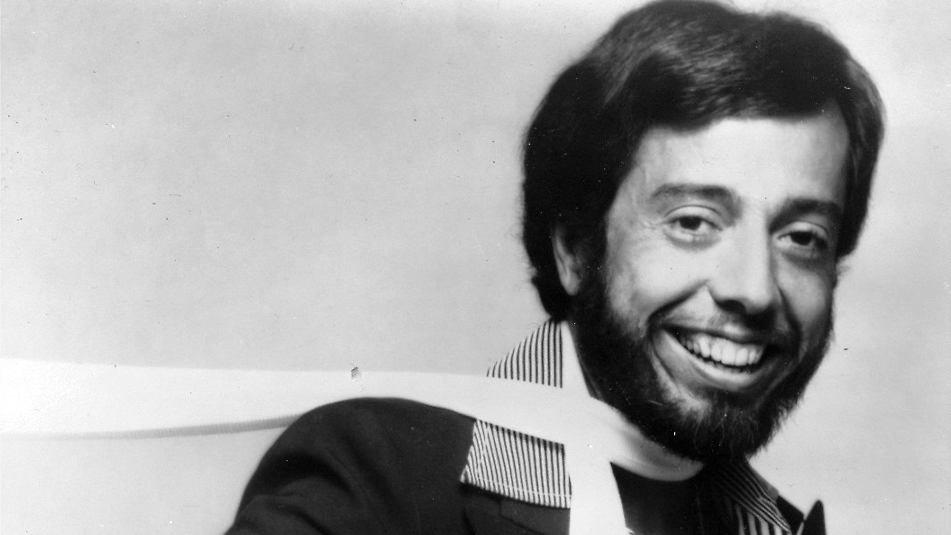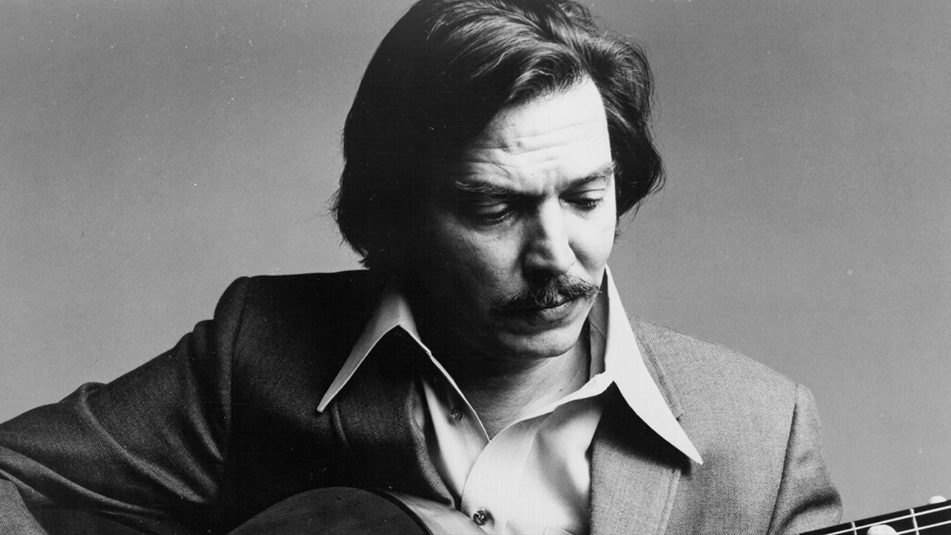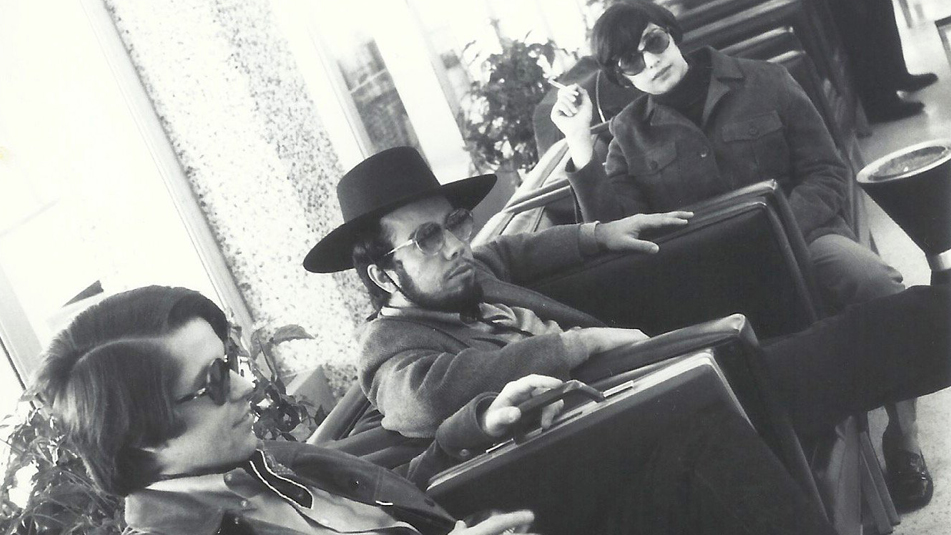bossa nova for the world
sÉrgio mendes interview
November 14, 2019 | by Richard Scheinin

Sérgio Mendes
Antônio Carlos Jobim may have invented the bossa nova. But as much as anyone, Sérgio Mendes popularized it, branded it, took it into the mainstream. Signed by Herb Alpert to A&M Records in the mid-‘60s, Mendes and his group Brasil ’66 placed hit after hit on the Billboard Top 10: “Mas Que Nada,” “Fool on the Hill,” “The Look of Love.” A regular on national television, Mendes became the face of bossa nova crossover, scoring more hits in the ‘80s – and even collaborating with will.i.am of the Black Eyed Peas on a bossa-hip-hop release, Timeless, in 2006.
Born in Niterói, across Guanabara Bay from Rio de Janeiro, Mendes — who performs Nov. 29-Dec. 1 at SFJAZZ — began classical piano studies at age seven. When he was 12, a friend handed him a copy of Dave Brubeck’s Time Out, and his life changed. A teenaged jazz fanatic, he began gigging around Rio in the late ‘50s, hanging out with Jobim, Hermeto Pascoal, Moacir Santos and other progenitors of the Brazilian musical revolution. Always a synthesizer, he founded a group called Sexteto Bossa Rio that was patterned after Art Blakey and the Jazz Messengers, while merging jazz with bossa nova and samba. Through the decades, Mendes — who moved to the U.S. in 1964 — has collaborated with throngs of artists: Cannonball Adderley and Dizzy Gillespie, Fred Astaire and Frank Sinatra, will.i.am and Erykah Badu. He composed the Portuguese lyrics for Stevie Wonder’s “Bird of Beauty” (on Wonder’s Fulfillingness’ First Finale). He enlisted Common, the rapper, as a guest on his upcoming album, due out early next year. He also is the subject of a new documentary, In the Key of Joy, directed by John Scheinfeld, whose previous films have profiled John Coltrane (Chasing Trane, from 2016), John Lennon, Sinatra and Bette Midler, among others.
For all his success, Mendes, 78, is an accessible man: Call him up, and he picks up the phone at home in LA, happy to tell stories about late-‘50s Rio, as well as his latest projects.

Q: Sérgio, can you describe the early bossa nova scene in Rio de Janeiro? You were just a kid; what was it like for you?
A: Everything gravitated around Copacabana and Ipanema, the beaches. And in Copacabana, there was a club called Bottles Bar — kind of a place like Birdland, and musicians from the U.S. would come to play there and to hang out with the Brazilian crowd. And that’s where I met Antônio Carlos Jobim. His music was so incredible; he was the guy who started the whole thing with his great melodies and beautiful harmonies. That’s when the American jazz musicians got completely seduced by those sounds: Stan Getz and Charlie Byrd, all those guys. So I was living in that universe of bossa nova, which was very lyrical, very melodic, very sensual. But at the same time, I was listening to jazz — to Horace Silver and Art Tatum and Art Blakey. And for a lot of people, bossa nova was just acoustic guitar and the voice; very minimalist. But my idea was to interpret these songs in a way that was not so minimalist. I wanted to be like the Jazz Messengers of Brazil, with the trumpet, the trombone, and the tenor saxophone. And that’s what I did with my group Sexteto Bossa Rio. Everybody else had small groups, or just guitar and voice. But my thing was kind of disruptive of that minimalist sound.

Antônio Carlos Jobim
Q: Let’s hear more about meeting Jobim.
A: He used to hang out and play at Bottles Bar, and we became very close friends. He wrote arrangements for my album Sérgio Mendes & Bossa Rio, and I used to go to his house and stay until 2 or 3 in the morning. I was always fascinated by his melodies and his harmonies, and he would explain things to me. Another good friend was Moacir Santos, who was my teacher for piano and harmony, and, of course, Baden Powell, the guitarist. We played together. There were a lot of clubs, and then I put together my band and I was hired by a company in São Paulo to be the musical director for a show. We traveled the world with my band and also with fashion models, promoting the Brazilian “look” along with the Brazilian music. We went everywhere — to Lebanon, to Japan.
Q: Did you and your friends think of yourselves as part of a new musical movement?
A: Absolutely. “Chega de Saudade,” the song by Jobim, was already a big hit on the radio. So was “The Girl from Ipanema.” So, yes, we understood that we were part of something new.
Q: Who else was on the scene when you were starting out? Did you know Hermeto Pascoal?
A: Yes! Around 1959, we met at a place in São Paulo called the Blow Up. And we used to play at another club called Baiuca; there used to be jam sessions there. There was a series of clubs in São Paulo, which is where Hermeto lived at the time. Then he moved to Rio and I saw even more of him. In those days, he was playing accordion — an amazing player, one of the most brilliant musicians I’ve ever met in my life. We’ve stayed in touch; I just saw him in Brazil, and he’s written a song for my new album.
Q: Let’s hear about the new record.
A: Well, there are two new projects. There is the documentary about my life, In the Key of Joy, which is coming out in January; it opens at the International Film Festival in Santa Barbara. And the album (which has the same title) comes out in February. It’s a celebration of life and rhythm, and it’s very, very Brazilian — all the percussion was recorded in Rio. I wrote a lot of new songs for this record, and Hermeto is one of my guests. I also have Common, the rapper, as a guest.
Q: Are you a rap fan?
A: I like it when it’s associated with a good melody. Common is amazing: It’s improvisational, what he does. It’s like a jazz thing, totally free, where he listens to the melody and then comes in and improvises with his words. Astonishing.
Q: Who else is on the album?
A: I have Carlinhos Brown, the incredible composer and percussionist. I call him the vulcão — a volcano, because he is a constant eruption. I have Joe Pizzulo, who sang with my band in the ‘80s, and Joe’s daughter, whose name is Sophia Pizzulo. But she calls herself — now don’t laugh — “Sugar Joans.” She’s 28, an amazing singer. And of course, my wife, Gracinha, sings on a lot of the new songs.

Nelson Motta, Sérgio Mendes, Gracinha Leporace (1968)
Q: Going through your Twitter feed, I saw a photo of you and Gracinha at an airport in 1968, while you were touring North America. You both look very mod.
A: Yeah, I met Gracinha in ’67; the first time I saw her, she was singing at the Blow Up in São Paulo with Hermeto’s band. And she’s been singing with my group for so many years now. She’ll be with me in San Francisco — and I want to say, this is a city that I’ve always loved. In ’64, ’65, I used to play at a club in Sausalito called the Trident, and I played in San Francisco at the El Matador on Broadway (in North Beach).
Q: You recorded an album there with your group Brasil ‘65: In Person at El Matador!
A: That’s right. And there was another club across the street, Basin Street West, where I saw so many great people. I’d walk across the street and see Jimmy Smith, Cal Tjader. I have so many memories of San Francisco. And years later, I met George Duke, who said to me, “Sérgio, I used to come to the Trident to listen to you.” I said to him, “You’re kidding!” I couldn’t believe it, because I was a big fan of George Duke.
Q: Let’s go back to 1962, when you visited the United States for the first time. You played at a big bossa nova concert at Carnegie Hall; looking back, that was a historic event, with so many key figures on stage. Jobim performed. So did João Gilberto, Luiz Bonfá, Stan Getz, Charlie Byrd, Lalo Schifrin — and you. You were 21 years old.
A: I was in awe of being there — to be in New York for the first time in my life, and then to be at Carnegie Hall. And there was the whole scene backstage, too. That’s where I met Dizzy Gillespie.
Q: That same week, you went to see Cannonball Adderley at Birdland.
A: Yes. It was incredible, hearing him. And maybe more incredible was this: He said he’d heard great things about the show at Carnegie Hall, and he said, “How about doing an album together?” I was in shock.
Q: At one time or another, it seems, you’ve worked with everybody: Cannonball, Dizzy, Jobim, Stevie Wonder, Erykah Badu, the Black-Eyed Peas. Do you take it all in stride, or do you sometimes look back and think, “This is crazy. This is like a dream”?
A: All of that. There’s a word that I use a lot, which is serendipity. A lot of my life has been that — those great encounters that I didn’t plan. Later, it happened with Sinatra, with Herb Alpert.
Q: Were you ever scared? Did you ever pass up opportunities?
A: (He pauses.) Maybe. But I’m curious and I love the adventure of meeting new people, new musicians, painters and artists in general. I think my curiosity led me to decide, “I’d like to try that,” instead of staying with the usual thing.
Did I pass anything up? I can’t remember. I’m not saying I embrace everything that comes along. But it’s more in my nature to say “yes” to something new.
Q: How did you feel in the studio with Cannonball? Frightened?
A: Of course. Yeah! Absolutely, almost like it’s not really happening. How did this happen? I go to see him at Birdland, because I’m a fan — and then, in a matter of days, I wind up making an album with him.
Q: Can you describe going into a jazz club in New York for the first time? I remember going to the Village Vanguard as a teenager, and seeing Charles Mingus, Roland Kirk, McCoy Tyner. I still get the chills, thinking about those experiences.
A: Me, too! I saw Bill Evans at the Vanguard. Oh, yeah! All the people that I love: Wynton Kelly and Bobby Timmons. I went to see Miles at the Vanguard — and he asked me to play with him.
I’m a big jazz guy, a fan. After I moved to LA in 1964, I was playing at Shelly’s Manne-Hole, meeting people like Shelly Manne, Ray Brown, Chet Baker, Bud Shank.
But in parallel to that, there were all the melodies in Brazil, and the rhythms, which are very different from the jazz rhythms. And that’s what made Brazilian music so important to Ella Fitzgerald and Sarah Vaughan and all those people. They were attracted to the rhythms. And, curiously, in the early ‘60s, I used to play “Mas Que Nada” at the Bottles Bar in Rio. That song is chant-like, very Brazilian, very African, rhythmically. And when I recorded it here in the U.S. in 1966, it became a worldwide hit. People loved that infectious chant, the rhythm. And then 40 years later, it happened again, when I recorded it with will.i.am and the Black Eyed Peas. Again, it became a hit. Hard to imagine.
Q: “Mas Que Nada” was composed by Jorge Ben, the singer and songwriter. Did you know him in Rio when he wrote that song in the early ‘60s?
A: He was kind of an outsider — not part of the same circle with Jobim and Joao Gilberto and Moacir Santos. He was like a new guy who used to come into the club and play his guitar — very uniquely, very different. He was an unusual kind of composer — different melodically, with more of a rhythmical chant kind of thing. He didn’t have the same harmonic sophistication of “How Insensitive” or “Waters of March” and those songs by Jobim. But he had a rawness that was very appealing, and he had a way of playing rhythmically on his guitar that was different, his own style.
Q: When you recorded “Mas Que Nada” in 1966, it felt like such a perfect song for the times. It fit right into the Top 10 with The Beatles. Millions of people were listening to your song on their transistor radios, and I’m not sure they realized how African it is.
A: (Mendes laughs and sings the song’s chorus.) Oriá raiô! Obá obá obá! That’s very African — which is a big influence in Brazilian music, rhythmically. Like your blues, the samba comes from Africa.
Q: We’re running out of time. I wanted to ask you what it was like to perform for Richard Nixon at the White House.
A: I was in awe. To play at Carnegie Hall, and then to be an opening act for Frank Sinatra, and then I’m invited to have dinner at the White House? Come on! That was the visit of Prince Juan Carlos; he was not yet the King of Spain. What a night. I’ll tell you a funny little story. So after dinner, I’m pinching myself, because I’m in the White House. And Nixon says, “I’d like to introduce my friend from Brazil.” And you don’t think of Nixon as a funny guy. But he says, “There’s a song he’s going to play for you that I’d like to dedicate to everyone in the Senate,” he says, “and it’s called 'The Fools on the Hill.’”
Q: A zinger from Nixon! Did you ever go back to the White House?
A: Yes, one other time, for Reagan. Unfortunately, Obama didn’t invite me; I would’ve liked that.
Q: Obama’s theme song was “Yes We Can,” by your friend will.i.am. How did the two of you meet?
A: Will came to my house in LA, rang the bell, and I opened the door, and he’s standing there with all my old records — everything, including my instrumental albums on Atlantic. And he says, “Sérgio, I’m from L.A. and I grew up listening to your music.” And he was so sincere, this young guy. This was in 2004. The Black Eyed Peas were starting to get popular, and I said, “Let’s do something together.” So he produced my album Timeless; that’s how it happened. And he brought all his friends to the studio, like Q-Tip and Justin Timberlake and India.Arie. And I was surprised that they knew my music — and that they liked it. And because of him, a whole new audience began to listen to my songs. I owe him a lot.
Sérgio Mendes performs November 29 - December 1 in Miner Auditorium at the SFJAZZ Center.
